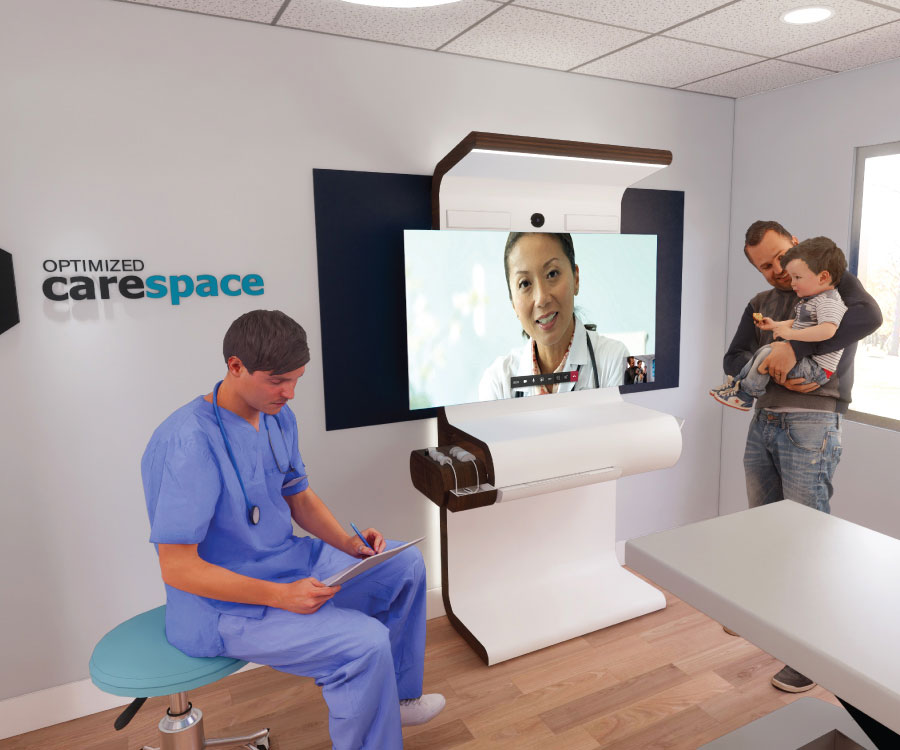
5 Ways Healthcare is Changing Forever
Estimated Read Time: 3 - 5 Minutes
The healthcare industry is at a critical juncture, compelled to adapt to a confluence of significant factors that are reshaping the landscape. These factors include technological advancements, new market entrants, the global pandemic, and changing patient expectations.
Healthcare providers who refuse to adjust to this new reality may not be around for the long run. In this article, we provide a glimpse of the 5 key ways healthcare is undergoing a transformation that will have lasting effects. For the full version, be sure to visit the download link at the end of the article.
Empowering Patients in the Digital Age
In the past, doctors held the reins of healthcare decisions. Today, consumers have gained unprecedented control over their healthcare choices.

The people who lost out the most due to healthcare’s unwillingness to change were consumers (aka patients). Brands like Amazon, Uber, DoorDash, and Netflix have shown consumers the power of choice and convenience. The 21st century healthcare system is adjusting to cater to patients in a way that mirrors their experiences with leading brands. Virtual health services have gained significant traction, marking a shift away from traditional care models.
Escape from the Hospital Campus
From a patient experience perspective, the hospital campus is not the ideal treatment location.

Following COVID-19, concerns about infectious diseases will continue to influence healthcare decisions. If you are an otherwise healthy individual who needs specialized treatment or a well visit, why would you choose to go to a place with the highest concentration of sick people? It is very convenient for providers to consolidate its staff and operations in a large hospital campus. The only problem, it is the most expensive environment to receive care, it’s often inaccessible, it’s not exactly an inspiring experience – and now, it’s actually scary. The movement towards outpatient centers and clinics closer to where people live, work and play is gaining momentum, offering a more cost-effective and accessible alternative.
Prioritizing Customer Experience
It’s time for customers to get the level of service they receive from other service industries.
For healthcare providers to serve their customers, they must adopt a consumer centric approach. Companies like CVS, Walmart, One Medical, and Parsley Health are reimagining healthcare delivery, yet some providers have still been slow to make adjustments. This journey needs to prioritize the customer experience from online to offline and from virtual to in-person, emphasizing limited wait times, on-demand service, and transparent pricing structures. must be customer-oriented online to offline, virtually to in-person.
They need to think like best-in-class experiences in other industries. Out with the old, in with the customer’s view.
Transitioning from Sick Care to Well Care
A person’s healthcare is an always-on journey, not something that should only be addressed when sick.
The coronavirus crisis has accelerated discussions about shifting from a volume-based healthcare model to a value-based one. The former incentivizes visits and procedures, while the latter incentivizes maintaining wellness, so they do not need expensive procedures. The wellness movement means a lot of things to a lot of different people and companies, but one thing is for certain: people would prefer to maintain wellness instead of getting sick. Well care is centered on the customer’s needs, while sick care traditionally serves providers and insurance interests.
The Rise of Telehealth and Accessibility
Virtual healthcare is being used much more frequently than prior to the pandemic, but have providers properly incorporated it to their offering?

The current crisis underscores the need for healthcare to be accessible everywhere. Telehealth, which saw increased adoption during the pandemic, can play a pivotal role in a consumer’s healthcare journey. It reduces the risk of exposing patients and healthcare workers to germs and offers convenient treatment options. Forrester Research predicts more than 1 billion virtual healthcare visits in 2020 (CNBC). If we’re looking at a consumer’s healthcare journey, telehealth can often be the first step in that journey. As healthcare providers increasingly integrate telehealth into their services, the next steps involve weaving virtual and home health into an overall experience strategy.
Conclusion: Embracing Change for Survival
The healthcare industry’s ability to adapt rapidly to long-overdue changes is a testament to the influence of consumers. As patients gain more control over their healthcare choices, providers are compelled to transform their practices. The failure to adapt at this point could jeopardize the very existence of healthcare providers in the future.
Download the full printable and shareable version of 5 Ways Healthcare is Changing Forever here »
Learn more about how WD can help innovate and scale your practice and then talk with our Health and Wellness practice leader, Dan Stanek, to get started.
 Dan Stanek
Dan Stanek


